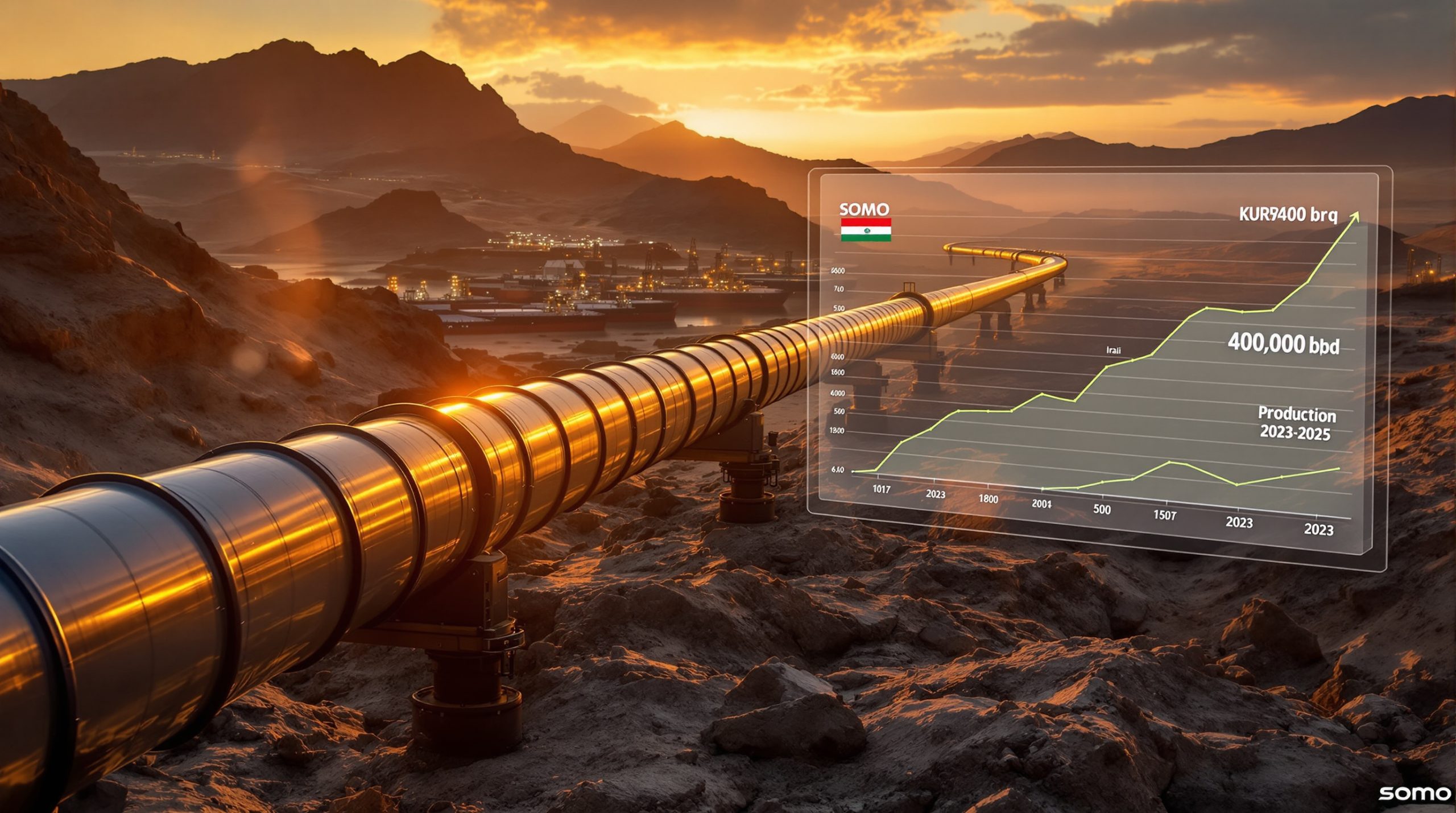Why Nickel Prices Are Poised to Exit $15K Range: Market Forces Driving Potential Breakout
The nickel market has been trapped in a narrow trading range between $15,000 and $15,800 per ton since April 2025, creating frustration for investors and producers alike. This stagnation, while prolonged, appears unsustainable as multiple market forces converge to create conditions for a potential price breakout. With seasonal supply reductions, regulatory changes, and shifting market strategies from key players, the nickel importance & uses are becoming increasingly critical as the market approaches an inflection point that could redefine pricing dynamics in the coming months.
Supply-Demand Imbalance Masking True Market Conditions
The current price range reflects a temporary equilibrium that masks significant shifts occurring beneath the surface. Indonesian production expansion has created persistent oversupply conditions, while Chinese downstream processing capacity has absorbed much of this additional output. This delicate balance has kept exchange inventories relatively stable despite reported surpluses, with production costs for many operations approaching the current price floor and limiting further downside movement.
Market analysts note that this narrow trading range has persisted longer than anticipated, with the $15,000 level serving as a psychological support that reflects the economic reality of production costs. According to industry data, many marginal producers operate with all-in sustaining costs between $14,500 and $15,200, creating a natural floor at current price levels.
How Seasonal Supply Constraints Will Impact Q4 Pricing
Fourth quarter market dynamics traditionally bring significant changes to nickel supply, with weather patterns disrupting mining operations in key regions. This seasonal shift appears positioned to become a major catalyst for market movement in the coming months.
Philippine Production Seasonality Creates Natural Supply Reduction
The Philippines, a critical nickel ore supplier, experiences dramatic production swings throughout the year that follow predictable patterns:
| Quarter | Philippine Nickel Production | Impact on Global Supply |
|---|---|---|
| Q3 | Peak output (nearly 50% of annual) | Market well-supplied |
| Q4 | Drops by approximately 50% | Supply tightening begins |
| Q1 | Further reduction due to monsoon season | Potential supply shortages |
| Q2 | Gradual recovery as weather improves | Market rebalancing |
This cyclical pattern creates natural supply constraints as we enter Q4, potentially providing upward price pressure after months of stability. The Philippine Mines and Geosciences Bureau data confirms this pattern has remained consistent over multiple years, making it a reliable factor in market projections.
Industry analysts highlight that these seasonal production declines coincide with typically stronger stainless steel demand periods in China and Europe, creating conditions where supply reductions meet stable or increasing demand.
Why Indonesia's Market Strategy Is Shifting from Suppressor to Supporter
Indonesia's approach to nickel market management appears to be evolving in a way that could fundamentally alter global price dynamics. After years of prioritizing production volume and market share, economic and political factors are driving a strategic shift.
Market Dominance Exceeds OPEC's Control of Oil
Indonesia has achieved unprecedented control over global nickel supply, surpassing even OPEC's influence in oil markets:
- Controls approximately 50% of global nickel production, compared to OPEC's 40% share of oil markets
- Previously focused on maximizing production volume and market share
- Now positioned to benefit significantly from price increases
- Economic incentives favor supporting higher prices to address national economic objectives
Financial analysis suggests that a $4,000 per ton increase in nickel prices (to the $18,000-$20,000 range) would generate sufficient revenue to eliminate Indonesia's current account deficit. This creates powerful economic incentives for Indonesia to support rather than suppress prices, representing a significant shift in market dynamics.
Regulatory Actions Creating Supply Constraints
Recent Indonesian government actions have introduced additional supply limitations that align with this potential strategy shift:
- Forestry license reviews resulted in 190 companies losing operating permits
- 36 nickel producers among those affected by regulatory crackdown
- Licensing duration reduced from three years to one year, creating operational uncertainty
- Environmental compliance standards tightened for existing operations
These regulatory changes effectively remove marginal production from the market, potentially tightening supply at a critical seasonal juncture. Industry observers note the timing of these actions coincides with broader economic planning objectives rather than representing purely environmental concerns.
How Rising Production Costs Are Squeezing Profit Margins
Throughout 2025, increasing costs have been working their way through the nickel supply chain, creating pressure for price increases that may become impossible to resist.
Cost Inflation Impacts Multiple Production Stages
The progression of cost increases through the supply chain represents a critical development that market prices have yet to fully reflect:
- Ore prices have maintained elevated levels despite Chinese efforts to talk the market down
- Nickel pig iron prices in Indonesia and China have risen in response to higher input costs
- Stainless steel production margins have compressed, forcing producers to seek higher prices
- Energy costs have increased by 15-20% for processing operations in key production regions
This cost inflation has squeezed profitability across the supply chain, creating conditions where producers require higher nickel prices to maintain viable operations. Financial analyses from major producers indicate that sustained operations at current price levels will become increasingly challenging without significant technological improvements or cost-cutting measures.
What Role Electric Vehicle Demand Plays in Nickel's Future
Electric vehicles impact continues supporting nickel demand fundamentals, with global sales showing robust growth despite economic headwinds and shifting battery chemistry trends.
Global EV Sales Growth Maintains Strong Momentum
Recent market data shows resilient demand growth that supports long-term nickel consumption:
- Global EV sales increased 15% year-over-year in August 2025
- European market demonstrated particularly strong performance with over 30% annual growth
- Hybrid vehicle production targets have increased from 20% to 50% of total output for some manufacturers
- Nickel deployment in batteries continues growing at 13% annually
This growth trajectory remains strong despite earlier concerns about economic headwinds and battery chemistry changes. Market data indicates EV sales growth has remained resilient even as overall automotive markets faced challenges, reinforcing nickel's role in the energy transition.
Battery Chemistry Evolution Supports Nickel Demand
Technological developments in battery chemistry have important implications for nickel consumption that market observers are still fully processing:
- Hybrid vehicles typically use 60% nickel chemistry rather than 90% nickel used in full electric vehicles
- Advanced battery technologies have achieved safety standards allowing higher voltage operation
- These 60% nickel batteries have become increasingly popular for hybrid applications
- The shift toward hybrids may stabilize nickel demand rather than reducing it as previously feared
Battery technology specialists note that nickel remains critical for achieving energy density targets in both hybrid and full electric applications. The material's unique properties continue making it essential despite ongoing research into alternative chemistries.
How Government Policies Are Accelerating Critical Mineral Development
Government support for critical minerals strategy has intensified in response to supply chain security concerns and economic transformation objectives. This policy shift creates potential for accelerated project development that could reshape medium-term supply dynamics.
Canadian Government Framework Creates Fast-Track Pathways
Canada has established a comprehensive approach to critical minerals development that exemplifies broader global trends:
- National priority project framework identifies strategically important developments
- Unprecedented cooperation between federal and provincial governments
- Fast-track approval processes for qualifying projects
- Substantial funding mechanisms available at both provincial and federal levels
The policy framework provides both capital access and regulatory acceleration for strategic projects, potentially bringing new nickel supply online faster than previously anticipated. This government-led approach reflects growing recognition of nickel's strategic importance for energy transition and national security objectives.
Industry experts note that similar policy frameworks are emerging across multiple jurisdictions, including Australia, the European Union, and the United States, creating a supportive global environment for nickel project development.
What Data Accuracy Issues Challenge Market Analysis
A significant concern for market participants involves the reliability of widely-cited nickel market data, potentially leading to misaligned investment decisions and market inefficiencies.
International Nickel Study Group Reporting Discrepancies
Market balance projections from official sources show troubling inconsistencies that complicate strategic planning:
- Reported surpluses in 2025 nearly triple the actual inventory changes observed in major exchanges
- Historical correlation between projections and inventory changes broke down after 2021
- Potential causes include underestimation of EV nickel consumption, supply reporting issues, and misunderstanding of product convertibility
- These discrepancies complicate investment decisions and may contribute to market mispricing
Financial analysts have identified that market pricing appears to reflect actual inventory movements rather than reported surplus figures, suggesting participants may be discounting official statistics in favor of observable market metrics. This creates potential information asymmetry that sophisticated market participants can leverage.
How Corporate Developments Are Reshaping the Nickel Sector
Several significant corporate announcements highlight evolving strategies across the nickel industry, with clear emphasis on processing capabilities and concentrate quality improvements.
Processing Integration Becomes Strategic Priority
Recent corporate developments emphasize the importance of processing capabilities in creating sustainable business models:
- Electra Battery Materials secured CAD 17.5 million for cobalt refinery restart
- FPX Nickel demonstrated successful pilot plant results producing 64% nickel concentrate
- Western Mines Group reported high-grade sections showing 15 meters of 7.5% nickel
- NexMetals improved concentrate grades to above 10% nickel, though recovery rates remain challenging at 56%
These developments underscore the industry's focus on processing integration and high-grade concentrate production as key differentiators in a competitive market. Financial analysts note that companies with processing capabilities generally command higher valuations and attract greater investor interest than pure-play mining operations.
The trend toward vertical integration appears particularly pronounced in the battery materials supply chain, where companies are increasingly seeking to control multiple processing steps to capture additional margin and ensure product specification compliance.
What Investment Sentiment Changes Signal Market Transformation
After years of investor disinterest, the nickel sector appears to be attracting renewed attention from both specialized and generalist investors, potentially signaling a broader market re-evaluation.
Capital Markets Show Renewed Interest
Several indicators suggest improving investment sentiment that could support both share prices and project financing:
- Generalist investors returning to mining sector after prolonged absence
- Private equity funds exploring opportunities beyond traditional focus areas
- Government support programs enhancing project economics and reducing development risks
- Projects capable of generating profits in the $20,000 per ton range attracting particular interest
This renewed investor interest coincides with expectations of a potential price breakout from the current range-bound trading pattern. Market participants note that investment timing appears increasingly favorable as multiple catalysts converge heading into the fourth quarter.
Investment strategists highlight that nickel-focused companies with advanced projects have outperformed broader mining indices in recent months, suggesting early recognition of improving sector fundamentals by specialized investors. Those seeking to navigate this market effectively should consider consulting an investment strategies guide for optimal positioning.
What Key Factors Will Drive Nickel Prices in Q4 2025
The combination of seasonal supply reductions, regulatory pressures, and evolving market strategies creates conditions that could support higher nickel prices in the coming months.
Multiple Catalysts Converge for Potential Price Movement
Several factors may contribute to nickel prices poised to exit the $15K range:
- Seasonal production declines in the Philippines reducing ore availability by up to 50%
- Indonesian regulatory actions removing marginal production through permit revocations
- Rising production costs establishing higher price floors across the supply chain
- Continued growth in battery sector nickel consumption at 13% annually
- Strategic shift in Indonesia's market approach from volume to value
These converging factors suggest the nickel market may be approaching an inflection point after months of range-bound trading. Market technicians note that price movements often accelerate once key resistance levels are breached, potentially creating momentum for significant repricing if the market moves decisively above the $16,000 level.
According to a recent analysis by Crux Investor, the seasonal supply crunch could drive a fundamental shift from bearish to bullish conditions, particularly as global inventory levels remain constrained despite reported surpluses.
Navigating the Nickel Market's Transition Period
The nickel market appears positioned for significant changes after a prolonged period of price stability. The combination of seasonal supply constraints, regulatory developments, and evolving market strategies creates potential for price movement beyond the current $15,000-$15,800 range.
For investors evaluating opportunities in this sector, focusing on companies with strong processing capabilities, government support for development, and ability to generate profits at sustainable price levels appears crucial. Projects requiring extreme price levels above $22,000 per ton remain speculative, while those viable in the $18,000-$20,000 range offer more balanced risk-reward profiles.
Industry analysts emphasize that market transitions typically create both opportunities and risks, with companies positioned at strategic points in the value chain often benefiting most from changing market dynamics. As Eramet highlighted in their 2023 financial results, operational efficiency improvements become increasingly crucial during transition periods in the nickel market.
Furthermore, understanding broader industry evolution trends will be essential as the nickel market navigates this potential transition period, with careful evaluation of individual company positioning relative to emerging trends being critical for investment success.
Disclaimer
Market projections and price forecasts discussed in this article represent potential scenarios based on current information and historical patterns. Actual market developments may differ substantially based on unpredictable factors including government policy changes, technological developments, and broader economic conditions. Investors should conduct thorough due diligence and consider their individual risk tolerance before making investment decisions in the nickel sector.
Frequently Asked Questions About Nickel Market Dynamics
Why has the nickel price been stuck around $15,000 per ton?
Indonesian production expansion created persistent oversupply conditions over the past several years, while Chinese processing capacity absorbed much of this additional output. Production costs approaching this level have established a price floor, while seasonal factors and market management have capped upside movement. This combination of factors created a temporary equilibrium that appears increasingly unstable as fundamental factors shift.
What seasonal factors affect nickel supply?
Philippine nickel production typically peaks in Q3, providing nearly half of annual output, then drops by approximately 50% in Q4 as weather conditions deteriorate. This consistent seasonal pattern creates natural supply constraints entering the fourth quarter. The monsoon season further reduces production in Q1, creating a multi-quarter period of tighter supply conditions before recovery begins in Q2.
How does Indonesia influence global nickel prices?
Indonesia controls approximately 50% of global nickel market share, exceeding OPEC's control in oil markets. After years of maximizing production volume, Indonesia now has economic incentives to support higher prices, as a $4,000 per ton increase could potentially eliminate its current account deficit. Recent regulatory actions, including forestry license reviews affecting 36 nickel producers, appear aligned with a strategy shift toward value rather than volume.
How do electric vehicles impact nickel demand?
Global EV sales increased 15% year-over-year in August 2025, while nickel deployment in batteries grew 13% annually. The shift toward hybrid vehicles (using 60% nickel chemistry) may stabilize rather than reduce nickel demand as previously feared. Battery chemistry continues evolving, but nickel remains essential for achieving energy density targets in both hybrid and full electric applications.
What price levels make nickel projects economically viable?
Projects capable of profitability in the $18,000-$20,000 per ton range are positioned well for long-term sustainability, avoiding dependence on extreme price levels above $22,000 per ton. Government support programs, processing integration, and favorable logistics can significantly improve project economics. Investors increasingly focus on all-in sustaining cost metrics rather than simple operating costs when evaluating project viability.
Want to Catch the Next Major Mineral Discovery Before the Market?
Discovery Alert's proprietary Discovery IQ model provides instant notifications on significant ASX mineral discoveries, delivering actionable insights before the wider market. Explore how major mineral discoveries can generate substantial returns by visiting Discovery Alert's dedicated discoveries page.




